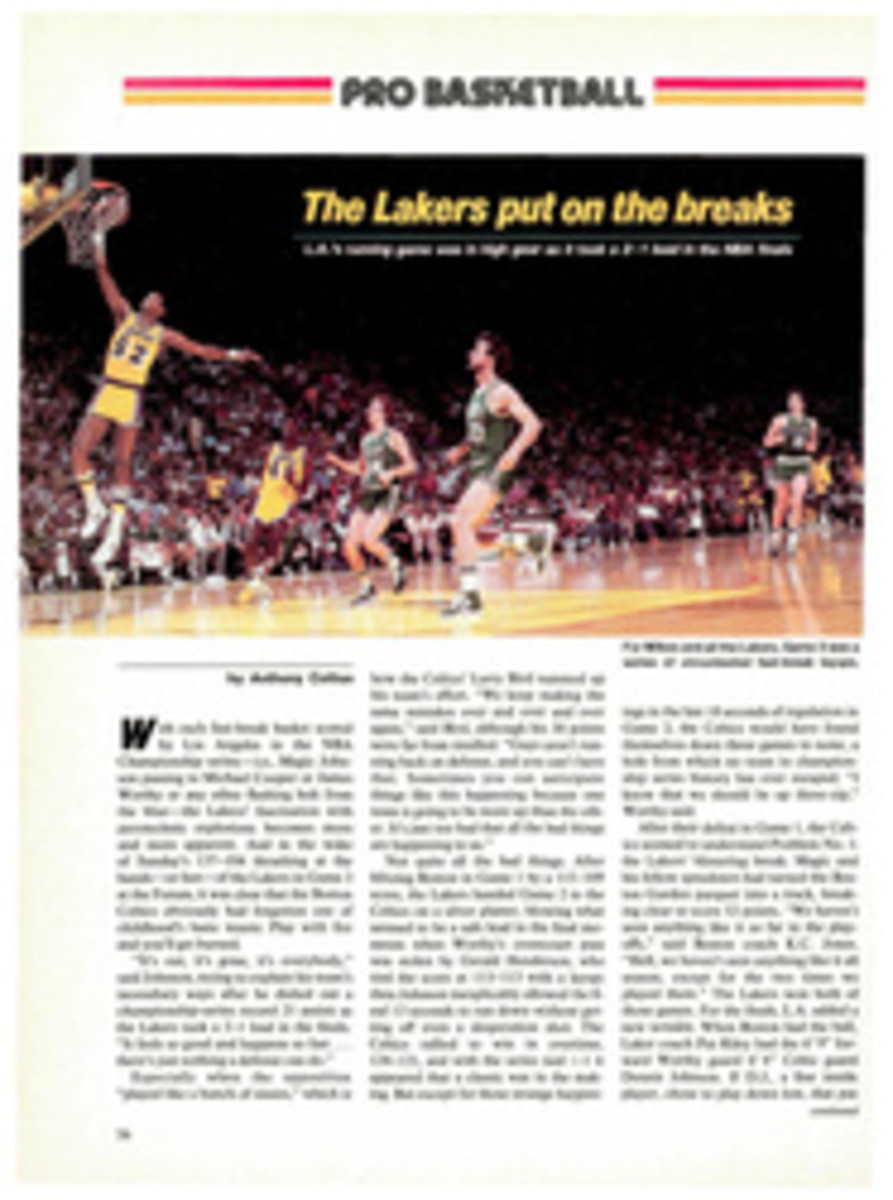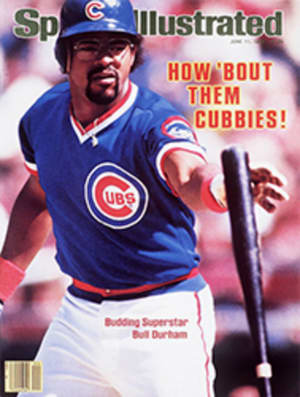
A Tragedy At Sea
Hopes were rapidly fading early this week that any additional survivors would be found from the mishap in the Atlantic that befell the 117-foot British square-rigged bark Marques. The ill-fated ship, one of 42 entered in the Bermuda-Nova Scotia leg of a series of Tall Ships races, sank in stormy seas early Sunday morning 80 miles north of Bermuda. Of the 28 people aboard, including 13 Americans, nine were rescued. One body was recovered and 18 other people were missing, among them the American captain, Stuart A. Finlay, his wife, Aloma, and 15-month-old son, Christopher. Although a 3,600-square-mile search for survivors continued, a U.S. Coast Guard spokesman said on Sunday, "Chances are not looking too good for those who are still missing."
If no more survivors are located, the death toll would be 19, equaling the loss of life in the storm-racked 1979 Fast-net, Britain's classic offshore race. The tragedy in the case of Marques was heightened by the youthfulness of many of her crew. The Tall Ships race was sponsored by the British and American Sail Training Associations, organizations that promote an appreciation of sailing ships among young people, and one entry requirement for the event was that half of a ship's crew members be from 16 to 25 years old. The sailor whose body was recovered, James F. McAleer of Quincy, Mass., was 47, but many of the missing were between 15 and 25.
Marques was built in Spain in 1917 and bought as a hulk in 1971 by two Englishmen, Mark Litchfield and Robin Cecil Wright, who subsequently rebuilt her. The vessel was featured in several movies, including Dracula, Jamaica Inn and The Master of Ballantrae, and was used on the BBC-TV series The Voyage of Charles Darwin to portray Darwin's famed Beagle. More recently she was based in Antigua, where she was available for charters and cruises.
These Tall Ships races began last April in Saint-Malo, France. Marques joined the fleet on May 20 in Puerto Rico and then won the 1,030-mile leg from there to Bermuda. The next leg, 800 miles to Halifax, Nova Scotia, began last Saturday afternoon. The following morning the ships, representing some 20 nations, encountered 35-to 40-knot winds and seas of 20 feet or more. These conditions forced three other ships to abandon the race, one of them after taking on water. Marques was stricken worst of all. As survivors later told it, the ship was hit by an especially fierce squall, and an "all hands on deck" alarm was sounded. Moments later the ship was knocked down by a devastating wave, according to at least one account. The vessel then was walloped by yet another wave and began to sink. Crew members on deck jumped or were washed overboard, and some of them clambered onto the ship's rafts, where one used a flare to signal for help. Most of those belowdecks apparently were trapped aboard the ship as she sank.
"The squall that hit us was totally unexpected," said Philip Sefton, 22, a British crew member who was at the helm at the time. "It was incredible in its velocity. The ship was on her side in less than 10 seconds. She started to go under in 30 seconds. She was under in 40 seconds. As she went under, I levered myself onto the rail, and I was swept clear as the ship went under me. I went underwater for a few seconds. As I stood on the rail, I thought, 'Jump.' I was swept away." Sefton added that anybody asleep in a cabin would have had "no chance."
Afloat on the rafts, some of the survivors sang sea chanteys while waiting to be rescued. Help arrived after another ship in the race saw the flare and sent out a distress call. It was daylight by the time a third competing vessel, the 119-foot Polish schooner Zawisza Czarny, responded and rescued eight members of Marques's crew from three life rafts. She also recovered McAleer's body. A Canadian escort vessel, the frigate Assiniboine, picked up a ninth survivor.
Among those who made it onto a raft was Clifton McMillan, 16, of Fairfield, Conn. McMillan had just finished his watch and was belowdecks when the alarm sounded. "We were told to wait awhile at the bottom of the stairs and to stand ready to get out and lend a hand with changing the sails," he recalled. "Then water started pouring in. Five of us below struggled to get out, and when I next looked, only three of us had made it. I noticed a raft in front of me and I jumped onto it as she started to sink."
McMillan soon saw Bill Barnhardt, 24, of Wycombe, Pa., in the still-dark water. Barnhardt had just started his watch on deck when the ship rolled. He then tried desperately to free the sails loose in an effort to right her. But he was swept away by one of the waves. He swam to a raft, and McMillan "reached out and grabbed my arm and pulled me up."
Andy Freeman, 22, the ship's engineer, told SI correspondent Kevin Stevenson that after he surfaced, he clung to an unopened inflatable raft, then discovered an unoccupied 20-man raft and scrambled aboard. He also said that staying on deck to "enjoy the sailing" after his watch almost certainly saved his life.
As it happens, SI production manager Gene W. Ulrich, an inveterate sailor, had met skipper Finlay and some of his crew in Antigua during a two-day cruise aboard Marques in March. "They were talking about the Tall Ships races and were very excited," Ulrich says. "The ship was beautiful. I went all over her, and she was in excellent shape. The kids told us they'd crossed the Atlantic in storms and had encountered tremendous waves. If they survived those, they could survive anything. This must have been some freakish thing."
THREE PHOTOS
Most of the lucky few who got off the Marques alive took to life rafts—not life rings—which delivered them safely to Polish rescuers some four hours later.
PHOTO
The sky was clear, the sea relatively calm when Marques left Hamilton bound for Halifax.
TWO PHOTOS
Zawisza Czarny recovered McAleer's body along with eight of Marques's survivors.
PHOTO
Among things the Marques survivors could be thankful for was an ample Polish repast.

